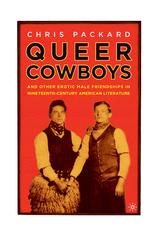

Most ebook files are in PDF format, so you can easily read them using various software such as Foxit Reader or directly on the Google Chrome browser.
Some ebook files are released by publishers in other formats such as .awz, .mobi, .epub, .fb2, etc. You may need to install specific software to read these formats on mobile/PC, such as Calibre.
Please read the tutorial at this link: https://ebookbell.com/faq
We offer FREE conversion to the popular formats you request; however, this may take some time. Therefore, right after payment, please email us, and we will try to provide the service as quickly as possible.
For some exceptional file formats or broken links (if any), please refrain from opening any disputes. Instead, email us first, and we will try to assist within a maximum of 6 hours.
EbookBell Team

5.0
90 reviewsWhy do the earliest representations of cowboy-figures symbolizing the highest ideals of manhood in American culture exclude male-female desire while promoting homosocial and homoerotic bonds? Evidence from the best-known Western writers and artists of the post-Civil War period - Owen Wister, Mark Twain, Frederic Remington, George Catlin - as well as now-forgotten writers, illustrators, and photographers, suggest that in the period before the word 'homosexual' and its synonyms were invented, same-sex intimacy and erotic admiration were key aspects of a masculine code. These males-only clubs of journalists, cowboys, miners, Indian vaqueros defined themselves by excluding femininity and the cloying ills of domesticity, while embracing what Roosevelt called 'strenuous living' with other bachelors in the relative 'purity' of wilderness conditions. Queer Cowboys recovers this forgotten culture of exclusively masculine, sometimes erotic, and often intimate camaraderie in fiction, photographs, illustrations, song lyrics, historical ephemera, and theatrical performances.